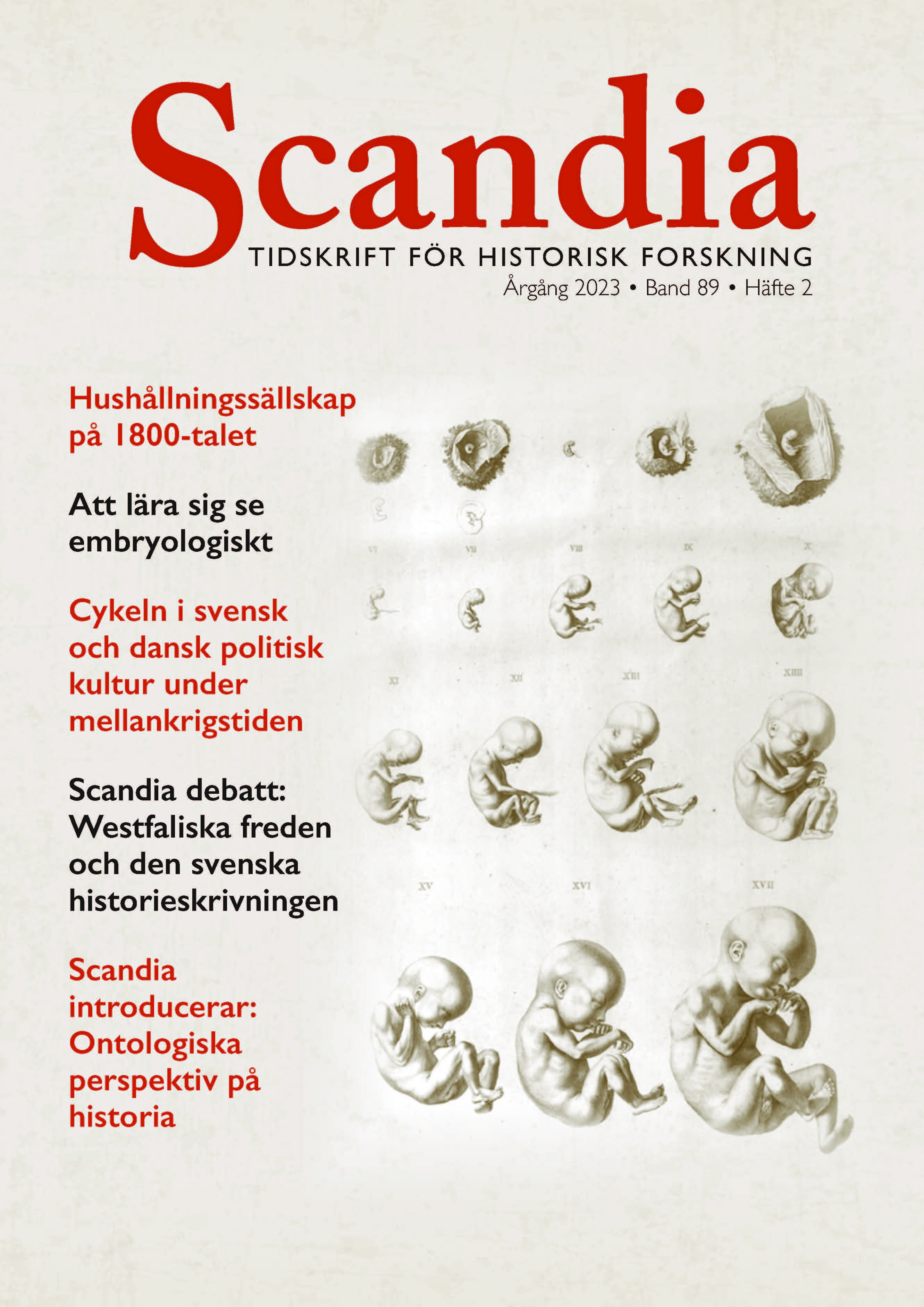”Ett av de bästa medlen i vår propaganda” Cykeln i svensk och dansk politisk kultur under mellankrigstiden
DOI:
https://doi.org/10.47868/scandia.v89i2.25794Nyckelord:
cyklar, politik kultur, gatupolitik, propaganda, mellankrigstidenAbstract
Genom empiriska exempel från Danmark och Sverige diskuterar denna artikel hur den moderna, massproducerade cykeln blev ett viktigt redskap i händerna på en ny generation av politiskt engagerade ungdomar. Under mellankrigsåren (1918–1939) framträdde unga människor allt tydligare som en egen samhällsgrupp och blev nyckelaktörer på den politiska scenen. De anammade moderna propagandametoder inspirerade av internationella trender och kom på så sätt att bidra till att forma den politiska kulturen i de skandinaviska länderna. Den politiska ungdomsmobiliseringen ägde framför allt rum i urbana miljöers offentliga rum; på gator och torg. I detta sammanhang kom cykeln att spela en viktig roll. Cykeln möjliggjorde för unga människor att ta mer plats i det samtida politiska livet genom att möjliggöra mobilitet, men också att skapa en ny form av rumslighet. Cykeln var således inte bara ett transportmedel; den var ett verktyg i kampen om det offentliga rummet. Cyklar användes för parader, spridning av propaganda och även stora cykeldemonstrationer, där ungdomsaktivister kunde skapa inte bara det symboliska, utan också det sociala utrymmet för sin politik. De utnyttjade cykeln som ett medel för att göra konfrontativa rumsliga anspråk. Cykelpropaganda blev en del av en pågående konflikt mellan vänster- och högerungdom, där de utmanade varandras anspråk på gatorna, ofta med våldsamma konfrontationer som ett resultat. Cykeln var därmed ett viktigt verktyg i en ny politisk kultur som uppstod i vågorna av det demokratiska genombrottet, där kampen om tillgång till det offentliga rummet blev allt viktigare än någonsin tidigare.






